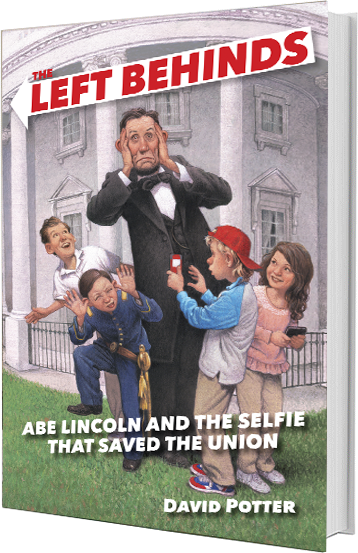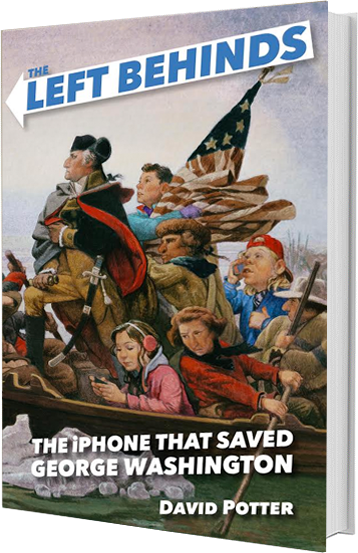George Washington and Alexander Hamilton get no respect.
Sure, one is on on the dollar bill, and the other is on the ten dollar bill, but when I hear folks talk about the “original intentions” of our Founding Fathers, rarely are Washington or Hamilton mentioned first.
As I see it, we are living in the nation George and Alexander envisioned.
Notice I use the word “nation.” For despite our name – “The United States” – we are most definitely a single nation.
Washington and Hamilton established this single nation. They give it its foundation. They nurtured it. And all that they did has endured to this day.
George Washington and Alexander Hamilton were the A Team of the Founding Fathers. Everyone else was either on the B team or, in the case of Jefferson and Madison, actively in the way.
It’s hardly possible for two men to be more dissimilar in person but as united in a common vision. Washington was tall, reserved, and formal, a scion of Virginia’s land-owning gentry; Hamilton was short, volatile, brilliant, a penniless immigrant from the West Indies, and illegitimately born, which was considered far more grave a condition in the 18th century than it would be today. They first encountered one another at the beginning of the Revolutionary War – Washington at 44 was the Commander-In-Chief, and the 21-year-old Hamilton was a lowly captain of the New York Provincial Company of Artillery. After seeing him in action at the Battle of Trenton, and recognizing his many natural abilities, Washington offered Hamilton the position of his chief aide-de-camp. For the next four years of the war, which included the brutal winter of Valley Forge, Washington and Hamilton worked side by side.
Throughout these years the Continental Army was plagued by the weakness of the Continental Congress. Soldiers and officers were not paid, or were paid in nearly worthless Continental script, and there were never-ending problems supplying the troops with provisions and ammunition. At war’s end, the British were defeated, but instead of new nation standing in its place there was merely a collection of colonies, with differing and conflicting interests and agendas. The Congress, and each colony, had incurred significant debts, but the financial system – if it could be called that – was in shambles.
And though the British were defeated, many threats remained, such as the Spanish and the French, who still controlled major swaths of North America. And let us not forget the various Native American tribes who were being pushed further and further away from their traditional territories by ever expanding settlement, but were keen on regaining ground that had been lost.
The war against the British crown might have been won, but the future? Dicey in the extreme.
Enter Washington and Hamilton.
Two men who had seen first hand, as perhaps no others had, the negative impact of a weak government and a weak financial system that couldn’t raise money, pay soldiers, discharge debt, or make decisions. The thirteen colonies were loosely aligned under The Articles of Confederation, which meant that each colony – with its own governor and assembly – thought itself supreme and its own interests paramount.
Hamilton, now a prominent New York attorney and politician, began agitating for something better. Something decidedly more powerful. He was a major organizer of the Annapolis Convention and drafted its resolution for a subsequent constitutional convention. And in order to give weight and substance to any proceeding to jettison the Articles of Confederation and replace it with something better – and more powerful – Hamilton prevailed upon his old boss and Commander-In-Chief, George Washington, to accept the presidency of the Constitutional Convention, which met for the first time in Philadelphia on May 14th, 1787.
They weren’t looking to do weak.
They weren’t looking for ineffective, indecisive, indistinct, or inept. They’d had enough of that with the Continental Congress and the current state of affairs under the Articles of Confederation.
So the first part of the task was to create a new nation. A new nation that had a strong central government, was powerful, and would take its rightful place among other nations. And then they would have to basically superimpose this new nation over the heads of the existing colonies. There are libraries of books that tell the tale in greater depth than I can here, but a few things stand out in my mind. The first words of the new constitution are in themselves extraordinarily radical – “We the People of the United States.” These words in effect assume citizenship in a sovereign nation – that did not yet exist! A resident of New Jersey was governed by New Jersey laws, a Virginian by Virginia’s laws, etc. – and now here were words in a constitution that gave New Jerseyans and Virginians, etc. equal standing in a common creation.
But for that common creation to succeed, it had to be ratified, and here the true craftiness of the framers showed itself. Ratification required only nine, not all, colonies to agree – they had learned the hard way during the proceedings of the Declaration of Independence that unanimous consent gave any one colony far too much power. And in order to circumvent the existing colonial power structures of Governor and assemblies, special ratifying conventions were held and delegates selected to vote on the Constitution. It took seven months, but finally New Hampshire, on June 21, 1788, voted yes – by a vote of 57-47.
George Washington, naturally, became our first President. For the second great task – establishing a sound financial system – he selected his former aide-de-camp, Alexander Hamilton, to be our first Secretary of the Treasury.
Which he immediately set out to do with remarkable vigor, competence, expertise, intelligence, and exactitude. I highly recommend Ron Chernow’s great biography of Hamilton for the details, but among many other things Hamilton proposed solutions for the debts of the nation and each colony, successfully fought to establish a national bank, constructed a coherent tax, impost, and tariff collecting system, advocated for a governmental role in the public infrastructure, and nearly singlehandedly created from scratch a functioning national treasury. He was vehemently opposed at every step by Thomas Jefferson and James Madison – which thus began political parties and the relentless factionalization of power which continues to this day – but that is a story for another post. The salient fact is that at every turn and every debate the President, George Washington, backed his Secretary of Treasury one hundred per cent.
Because they were both after the same thing: a strong nation. Which meant a strong central government. And they both knew that no nation could be truly strong unless it had a robust and viable financial system.
They would succeed, brilliantly – it’s been 225 years since Washington took his first oath of office – but they would be tested. Perhaps their greatest test, where all elements of support and opposition came together in one central drama, occurred in 1794 in the wilds of western Pennsylvania. I’ll discuss that in my next post, “Taxes, The Tea Party, and The Whiskey Rebellion.”



Great post! It has been shared on the blog for the Alexander Hamilton Awareness Society, as seen here: http://theahasociety.tumblr.com/post/95933496348/article-the-a-team-washington-and-hamilton
As you point out, the extreme Republicans conveniently ignore Washington and Hamilton because the duo were, well, federalists, and wanted a dominant federal government as opposed to a confederation of independent states. Some of Jefferson’s ilk complained that the preamble should read “We the States,” not “We the People.”
But we are a United States thanks to George and Alexander (among others), and no thanks to the Tea Partyers who want to refight not just the Civil War, but the Constitutional Convention and the Washington administration as well.